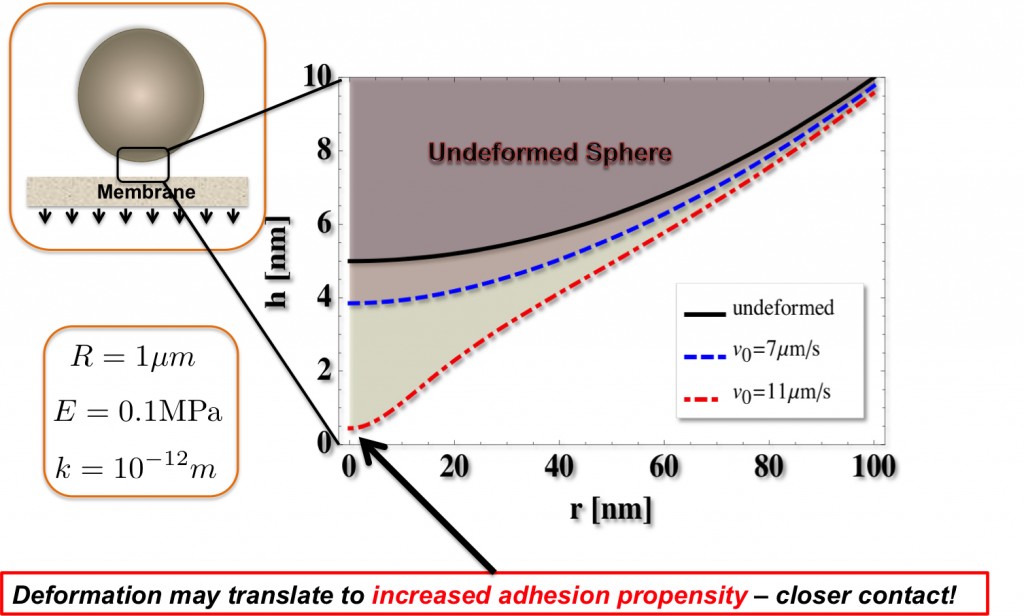Deposition and irreversible adhesion of colloidal material and bacteria are a major concern for the long-term deployment of membrane-based water production. Over time, these materials accumulate and cause performance decline leading to increased energy consumption. Understanding the conditions leading to deposition requires knowledge of the forces acting on a particle. A unique feature of membranes is the additional flow through the surface, which adds a hydrodynamic force perpendicular to the membrane, and directed toward it. Our theory shows how this force is dependent on particle size and shape, as well as the membrane permeability.
A major theme of research in the lab is the development of a unified theoretical description of colloidal deposition and aggregation at permeable boundaries. Additional effects, such as elasticity, are also being considered, since they may be important for soft particles such as bacteria, organic ‘gel’ aggregates etc.
Publications:
-
-
- On the enhanced drag force induced by permeation through a filtration membrane
Ramon, G.Z., Hoek, E.M.V., Journal of Membrane Science, 2012 - On the hydrodynamic interaction between a particle and a permeable surface
Ramon, G.Z., Huppert, H.E., Lister, J.R., Stone, H.A., Physics of Fluids, 2013
- On the enhanced drag force induced by permeation through a filtration membrane
-


